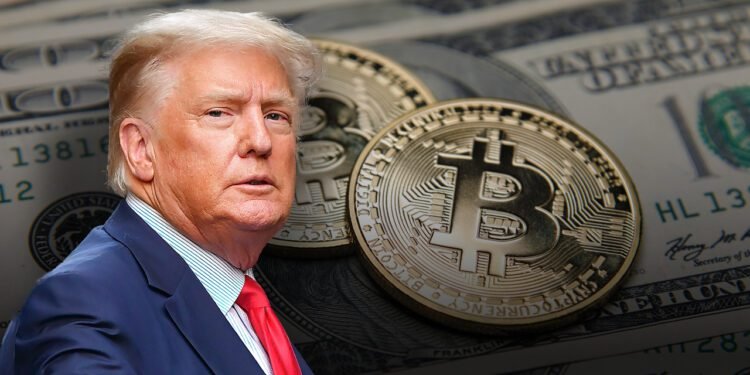In the 1860s, Britain introduced a peculiar law known as the Red Flag Act. It mandated every car to move slowly and required three people: a driver, an engineer, and a person walking ahead waving a red flag to warn others. Imagine someone today strolling in front of your car with a flag! It sounds absurd now, but cars were new and perceived as dangerous, much like dynamite. While this law aimed to ensure safety, it inadvertently stifled progress. As Britain clung to outdated methods, other nations embraced innovation, revolutionizing transportation.
This historical lesson highlights a recurring theme: revolutionary ideas often face skepticism and fear initially. Critics dismiss them as risky fads, yet their progress proves unstoppable. Doesn’t this resonate with the current discourse around Bitcoin and blockchain? These technologies, much like the first cars, are misunderstood and mistrusted. Skeptics label Bitcoin a bubble and blockchain a gimmick. But dismissing them entirely could mean missing out on a transformative opportunity.
Let’s break down these technologies, starting with blockchain.
What Is Blockchain?
Picture a classroom where the teacher maintains a single attendance sheet. If the sheet gets lost or altered, chaos ensues. To solve this, students propose a new system: everyone keeps their own attendance record. Any time a name is marked, all sheets are updated simultaneously. If someone tries to cheat, discrepancies are easily caught.
This concept mirrors blockchain. It’s a system where everyone holds identical records, making alterations nearly impossible without consensus. The system operates without a central authority, distributing responsibility among nodes (computers that validate and manage data).
How Blockchain Works
Blockchain functions like a digital ledger, grouping transactions into “blocks” that link together to form a continuous chain. Each block has a unique code, or “hash,” which connects it to the previous block. If anyone tampers with a block, its hash changes, breaking the chain and alerting the network. This structure ensures security and transparency.
Adding new blocks involves solving complex puzzles through a process called mining. Millions of computers compete to solve these puzzles, and the winner earns cryptocurrency as a reward. This competitive process, known as a consensus mechanism, keeps the network honest.
Hacking a blockchain is virtually impossible. Manipulating a chain would require more computing power than the entire network combined—an astronomical and impractical cost.
Bitcoin: Blockchain’s First Big Use Case
Bitcoin, launched in 2008, represents the first significant application of blockchain. Created by someone using the pseudonym Satoshi Nakamoto, Bitcoin emerged as a peer-to-peer electronic ledger system during the global financial crisis. Trust in traditional institutions had plummeted, and Bitcoin offered an alternative: a decentralised currency governed by code and mathematics rather than banks or governments.
Bitcoin operates like a digital ledger, tracking ownership through a chain of records. Transactions are signed with unique digital signatures and linked to the next owner’s address. This process ensures a tamper-proof history of ownership.
Key Features of Bitcoin
- Decentralisation: Bitcoin eliminates the need for central authorities. Transactions can’t be blocked or reversed, offering financial independence. In economies like Argentina during its 2019 financial crisis, Bitcoin provided a hedge against inflation and currency devaluation.
- Borderless and Cost-Effective: Traditional remittances involve high fees, but Bitcoin enables cheap, censorship-free international transfers.
- Programmability: Blockchain’s programmability enables smart contracts—agreements that execute automatically. Imagine a car paying for its own charging or a fridge restocking itself. These innovations could soon become reality.
- Limited Supply: Only 21 million bitcoins will ever exist, making it a deflationary asset akin to digital gold. This scarcity contrasts with traditional fiat currencies, which central banks can inflate.
Bitcoin also challenges conventional notions of money. Traditionally, money depends on central authorities for trust and management. Bitcoin replaces this with trust in mathematics and code, empowering individuals with private and public keys for secure transactions without intermediaries.
Challenges and Opportunities
Bitcoin isn’t without flaws. Its proof-of-work mechanism demands significant energy, and its volatility limits its use as a stable medium of exchange. However, these challenges resemble the early days of the internet, which overcame obstacles to become indispensable.
The Bigger Picture: What Is Money?
At its core, money is a tool for exchange, value storage, and worth measurement. Over centuries, money evolved from gold coins to paper bills to digital payments. Blockchain and Bitcoin represent the next step in this evolution—a digital-native form of money unbound by geography or politics.
Bitcoin’s true value lies in its potential to democratize finance. In regions with limited banking access, Bitcoin offers an alternative. Anyone with internet access can participate without relying on traditional financial institutions.
Conclusion
Bitcoin and blockchain remain in their infancy. Governments grapple with regulation, some embracing the technology while others resist or ban it. History shows that resistance to groundbreaking ideas is temporary. Cars, electricity, and the internet all faced skepticism before gaining acceptance. Blockchain and Bitcoin may follow a similar path, reshaping finance and technology.
This technology, like a cake once baked, cannot be undone. Its value may fluctuate, but its potential is undeniable. Instead of fixating on price movements, we should focus on the possibilities. The Red Flag Act teaches us to embrace innovation, not fear it. Bitcoin and blockchain hold the power to transform our world—if we’re willing to take the leap.

 Business
Business INDIA
INDIA Stocks
Stocks


